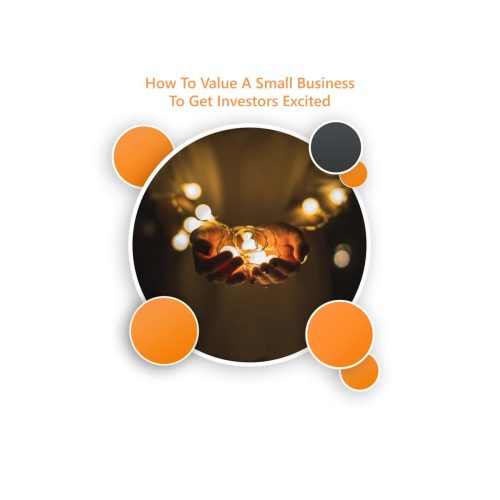Launching a new product can be both exciting and nerve-wracking. You’ve put time, effort, and resources into creating something you believe in, but the million-pound question remains: is there real demand for your product? Rather than diving in headfirst and hoping for the best, savvy entrepreneurs use marketing channels to gauge interest and validate their product ideas before going all-in.
In this blog, we’ll break down how to leverage marketing channels to assess product demand effectively, helping you make data-driven decisions and reduce the risk of wasted resources. Whether you’re a startup founder or an established business looking to launch a new offering, this guide will ensure you have the tools you need to determine whether your product is something customers genuinely want.
1. Start with Organic Social Media
Social media platforms like Facebook, Instagram, Twitter, and LinkedIn offer a low-cost way to gauge product demand early on. By creating content around your product idea and engaging directly with your target audience, you can gather feedback, monitor engagement, and observe trends in customer interest.
What to do:
- Post teasers and polls to see how your audience reacts to your product concept.
- Share behind-the-scenes content or stories about the development process to build a narrative around your product.
- Ask for feedback on specific features or problems that your product solves.
While you shouldn’t solely rely on social media as your product demand validation tool, it’s a great place to test the waters before investing in more expensive marketing channels.
2. Use Paid Advertising to Test Interest
Paid advertising, especially on platforms like Google Ads and Facebook Ads, allows you to test whether your target audience is willing to engage with your product concept by putting some skin in the game. With a small budget, you can run ad campaigns that target potential customers and monitor their response to your product.
What to do:
- Create ads that highlight the value and benefits of your product, including eye-catching images or videos.
- Set up A/B tests with different messaging, targeting options, or product features to see which resonates best.
- Use conversion tracking to monitor how many people click on your ad and take an action, such as visiting your website or signing up for updates.
Paid ads can help you quickly understand if your product is hitting the mark. If you see strong engagement (click-through rates, sign-ups, or purchases), it’s a good indication there’s product demand.
3. Create a Landing Page and Drive Traffic
A landing page is a single web page that focuses on one product or offer. It’s an ideal way to capture interest and measure intent from potential customers. With a well-designed landing page, you can gauge how interested people are in your product based on their actions, whether they sign up for a newsletter, pre-order your product, or leave feedback.
What to do:
- Build a simple, clean landing page that highlights the key benefits of your product and includes a clear call to action (CTA).
- Drive traffic to the landing page using paid ads, social media, or email marketing.
- Track metrics such as bounce rate, sign-ups, and time spent on the page to assess the level of interest.
If people are clicking through to your landing page but not taking action, it could indicate an issue with your product messaging or that the product demand isn’t as strong as expected.
4. Leverage Email Marketing for Pre-Launch Buzz
Email marketing is a tried-and-true method for testing product demand, especially if you have an existing customer base or following. By creating a targeted email campaign around your product idea, you can see how subscribers respond and whether they’re excited enough to click, engage, or even pre-order.
What to do:
- Send out a survey or announcement about your product to your email list and ask for feedback or interest.
- Set up a drip campaign that introduces the product and builds excitement over time, encouraging early sign-ups or pre-orders.
- Measure engagement rates such as open rates, click-through rates, and responses to determine whether your audience is excited about the new product.
If your email subscribers are eager to learn more or take early action, that’s a strong indicator that you’ve got product demand on your hands.
5. Test with Limited Product Releases
If you’re not ready for a full product launch, consider releasing a limited run of your product to test product demand in the market. This approach allows you to collect feedback, gauge interest, and refine your product without committing large-scale resources.
What to do:
- Create a limited batch of your product and offer it for sale to a small segment of your target audience.
- Promote the limited release through your marketing channels such as social media, email, and paid ads.
- Collect feedback from early customers and analyse sales trends to see how well the product performs.
This method not only helps you gather real-world data but also creates a sense of urgency and exclusivity, which can drive initial demand. By carefully tracking sales and customer feedback, you’ll get a clear picture of whether there’s appetite for a larger launch.
6. Leverage Marketplaces for Early Feedback
If your product fits into an e-commerce category, consider launching a small batch on popular online marketplaces like Amazon, Etsy, or eBay. These platforms already have a built-in customer base, making them excellent for testing product demand in a real-world setting without the need for a full-scale product launch.
What to do:
- List your product with clear descriptions, professional images, and compelling messaging that showcases its unique selling points.
- Track sales, customer reviews, and ratings to gather insights into demand and areas for improvement.
- Run limited-time promotions or discounts to attract early customers and drive interest.
By selling your product on established platforms, you get immediate feedback and valuable data on how well it performs in a competitive marketplace.
7. Partner with Influencers or Bloggers
Influencers and bloggers have trusted audiences that can help you test product demand before going all-in. A review, unboxing, or shout-out from the right influencer can give you instant feedback and drive significant traffic and interest.
What to do:
- Identify influencers or bloggers who align with your product and target audience.
- Send them a sample of your product or offer a sneak peek, asking them to share their thoughts with their followers.
- Track any spikes in traffic, engagement, or sales following their endorsement to measure demand.
Influencer marketing can help you tap into new audiences and give you a real sense of whether your product has mass appeal.
The Bottom Line: Test Before You Commit
In today’s competitive market, understanding whether there’s demand for your product is essential before launching full throttle. By leveraging marketing channels like social media, paid ads, landing pages, and email marketing, you can gather valuable insights that will help you refine your product and marketing strategy. And if you’re feeling confident, taking things further with crowdfunding or influencer marketing could give you that final stamp of approval.
Remember, it’s better to know upfront if product demand is low or if you need to tweak your offering, rather than discovering this after you’ve invested significant time and money. Testing demand early on not only saves resources but also sets your product up for success when you’re ready to launch.
Ready to launch your product with confidence? Join our Funding Accelerator and unlock equity investment in 90 days.
- Founders’ Negotiation Tactics: How To Secure The Best Startup Valuation - May 12, 2025
- How To Master Your Sales Lifecycle: Close Deals Faster And Smarter - April 30, 2025
- How To Maximise Your Business Valuation And Attract Investors - April 7, 2025






















